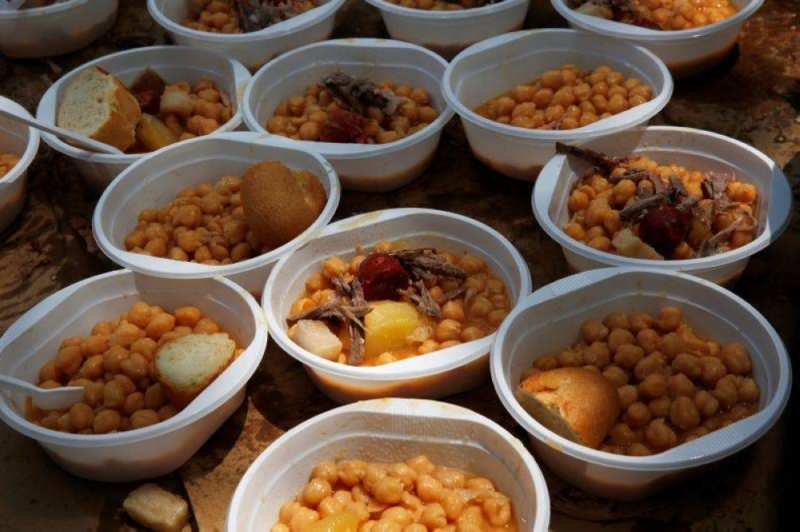Replacing animal protein with chickpeas is set to get more expensive, study finds

In the United States, the price of chickpeas has risen by 12 per cent in one year. ― Reuters file pic
NEW YORK, July 19 ― Whether in hummus, as an egg white substitute, or as flour for a gluten-free diet, chickpeas ― or garbanzo beans ― are much more essential than you might think. However, due to the war in Ukraine, supplies are dwindling and prices are expected to rise.
After sunflower oil, mustard seeds, coffee and sriracha sauce, chickpeas are the latest kitchen staple to be affected by a shortage ― or at least a reduction in supply. According to the Global Pulse Confederation, which represents the various players in the pulse industry, production is expected to decrease by 20per cent this year. The cause: the war in Ukraine. Although it's not widely known, Russia is an exporter of chickpeas, to the tune of between 200,000 and 250,000 tonnes per year. As such, it's a market that is logically facing the challenges of the sanctions imposed on Russia in response to the conflict in Ukraine. Indeed, Russia accounts for a quarter of the total chickpea market. At the same time, the war has also prevented Ukrainian farmers from planting chickpea crops, which could remove at least 50,000 tonnes from European supplies.
US production is still viable, but these crops are, as ever, at Mother Nature's mercy. Over the past two years, supplies have fallen by 10 per cent due to unfavourable weather conditions, particularly drought. Indeed, many farmers have preferred to plant wheat or corn, providing them with more income.
As a result, chickpea prices are on the rise. In the United States, jars cost 12 per cent more than in 2021, according to data from NielseniQ. The increase even stands at 17 per cent if compared to the pre-pandemic period. As a result, chickpea products are more expensive, the typical example being hummus, which is 6.9 per cent more expensive than in 2019. In the United Kingdom, too, the iconic Middle Eastern dip is gripped by price inflation, up 100 per cent since January, reports the Guardian.
Hummus is far from the only product that requires a large amount of chickpeas in its recipe. These pulses are also crucial to making another Middle Eastern specialty, falafel, as well as many other dishes hailing from the region, and around the Mediterranean. ― ETX Studio
NEW YORK, July 19 ― Whether in hummus, as an egg white substitute, or as flour for a gluten-free diet, chickpeas ― or garbanzo beans ― are much more essential than you might think. However, due to the war in Ukraine, supplies are dwindling and prices are expected to rise.
After sunflower oil, mustard seeds, coffee and sriracha sauce, chickpeas are the latest kitchen staple to be affected by a shortage ― or at least a reduction in supply. According to the Global Pulse Confederation, which represents the various players in the pulse industry, production is expected to decrease by 20per cent this year. The cause: the war in Ukraine. Although it's not widely known, Russia is an exporter of chickpeas, to the tune of between 200,000 and 250,000 tonnes per year. As such, it's a market that is logically facing the challenges of the sanctions imposed on Russia in response to the conflict in Ukraine. Indeed, Russia accounts for a quarter of the total chickpea market. At the same time, the war has also prevented Ukrainian farmers from planting chickpea crops, which could remove at least 50,000 tonnes from European supplies.
US production is still viable, but these crops are, as ever, at Mother Nature's mercy. Over the past two years, supplies have fallen by 10 per cent due to unfavourable weather conditions, particularly drought. Indeed, many farmers have preferred to plant wheat or corn, providing them with more income.
As a result, chickpea prices are on the rise. In the United States, jars cost 12 per cent more than in 2021, according to data from NielseniQ. The increase even stands at 17 per cent if compared to the pre-pandemic period. As a result, chickpea products are more expensive, the typical example being hummus, which is 6.9 per cent more expensive than in 2019. In the United Kingdom, too, the iconic Middle Eastern dip is gripped by price inflation, up 100 per cent since January, reports the Guardian.
Hummus is far from the only product that requires a large amount of chickpeas in its recipe. These pulses are also crucial to making another Middle Eastern specialty, falafel, as well as many other dishes hailing from the region, and around the Mediterranean. ― ETX Studio
No comments:
Post a Comment